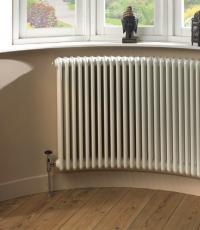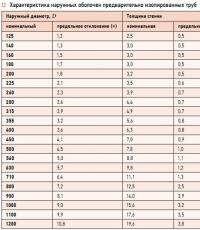Where are pirelli tires made? Tires Pirelli (Pirelli). Pirelli in Russia
The company "SHINSERVICE" offers a wide range of premium tires. In this section of the catalog you can select and buy suitable tires of the Italian brand Pirelli. The presented tires are characterized by excellent performance and are suitable for use in various climatic conditions.
Manufacturer information
Pirelli was founded in 1872, but the production of automobile rubber was only established by the end of the 19th century. Active development, introduction of new technologies and favorable prices have become the key to the success of the Italian manufacturer. Now the company occupies the fifth place in terms of sales in the world - the products of this brand are rightfully one of the most famous and in demand in the car tire market.
Pirelli is a huge tire manufacturing corporation with more than twenty factories in 13 countries, including Russia, Germany, the USA and the UK. The main direction for the Italian brand is the creation of premium tires. Rubber "Pirelli" is made from high-quality environmentally friendly materials, has a thoughtful and functional design, as well as increased reliability and durability. The company's products traditionally take first place in various tests conducted by popular magazines for motorists.
Why buy Pirelli tires from us?
The company "SHINSERVICE" provides its customers with a number of advantages:
- Official warranty for purchased tires.
- Real availability of Pirelli tires in stock.
- Large range of models and sizes.
- Prompt delivery.
You can get additional advice on the purchase of Pirelli tires by calling us at the contact numbers listed on the website!
What feeling will you experience when you find the made in Russia label on a foreign brand product that you just purchased? Moreover, you specifically made a purchase abroad in order to get a truly “branded” thing. Do you feel confused or, conversely, proud of the country? A similar anecdotal story about buying tires in Europe by an unlucky Russian car owner somehow happened to be heard by a Lenta.ru correspondent. Tires as a result cost exorbitant prices, which gives the incident an instructive connotation.
The logic of those who choose a product of foreign production is understandable: after all, how long did the inertia of thinking make, for example, treat domestically assembled foreign cars as “second freshness sturgeon”. Perhaps, only the current crisis has put everything in its place: cars of foreign brands that have not found sales in the country are now exported. This is perhaps the best proof that the quality of localized cars is not inferior to the original. But what about tires? The Lenta.ru correspondent visited the Pirelli factories in Voronezh, Milan and Turin to compare the production process.
Not robots burn pots
In Italy, a lot is connected with the eminent company, after all, it has existed since 1872. In honor of its founder, Giovanni Battista Pirelli, a street is named in Milan. And the first skyscraper that was allowed to rise above the famous Milan Cathedral is the Pirelli Center. At the company's headquarters, they carefully treat their own history - a large archive has been created that serves as a museum. And the old concrete cooling tower (that is, the water cooling tower) is skillfully inscribed in a modern ensemble of office architecture made of steel and glass.
A similar combination of technologies of the past and present centuries is in production. Serial tires are made by robots, but prototypes are made the old fashioned way, by hand. It is reminiscent of an art school: workers with chisels, like sculptors, leisurely gouge the tread grooves on a bare tire, clamped in an old, battered vise. This is cheaper than immediately making a mold for vulcanizing a tire with an experimental pattern, which, after testing, may have to be finalized.
So high technologies are technologies, and no one has yet canceled the golden hands of experienced craftsmen. This is especially felt in the Pirelli research center, where, in particular, tires for Formula 1 cars are being developed. It is necessary to design not only the tires themselves, but sometimes the auxiliary equipment. For example, in the past, something like carbon paper was used to measure the contact patch of the wheels with the road - this technology was borrowed by Pirelli from the manufacturers of running shoes. However, with the growth of requirements, the employees of the center had to independently develop special measuring tools.
mechanical waltz
Of course, pilot production has little in common with in-line production, where robots rule the roost. The birth of a tire begins with the creation of a multi-component rubber compound. The main ingredient is rubber, both natural and synthetic. The tire consists of about 80 percent of it. Sulfur and carbon black, as well as various chemical additives, are added to rubber. The exact composition of the mixture is the main know-how of the manufacturer.
To reduce costs, Pirelli seeks to use localized components to the maximum - for example, Russian rubber is used in Voronezh. And like the creators of fine wines, who by mixing grape varieties achieve the same taste, despite the difference in yields, Italians are forced to strictly ensure that the mixture at all 22 factories is identical. For this, a chemical analysis is carried out, and the apparatus is connected to a central server in Milan: if the sample differs from the reference, the conveyor stops.
The finished tire in section resembles an onion: a sealed layer, a textile cord and a metal cord, a shielding layer and, finally, a tread. Each ply requires its own rubber mix. Finished components are sent to assembly machines that resemble giant looms. Winding the cord, by the way, is also one of the secrets of production: the angle at which the textile tape, consisting of rubberized threads, is fed, regulates the contact patch of the future wheel.
After assembly, the tire takes on an almost finished look, but it feels like a piece of chewing gum - sticky and easily deformed. To give it strength, vulcanization is required. The tire is clamped with metal plates with a relief imprint of the tread and placed in an autoclave, where, under the influence of pressure and temperature, the rubber becomes elastic.

A few minutes pass - and with a hiss, in a cloud of steam, the finished wheel rolls out into the light to immediately get back on the conveyor - to the control area. As in Italy, in Russia the tire is checked in three stages: visual, instrumental control and X-ray to detect hidden defects. A high-quality tire is delivered to the finished product warehouse, the defective one is immediately cut and then disposed of. If the percentage of rejects in the batch exceeds the calculated value, the conveyor is stopped until the reasons are clarified.
social question
Production in Turin and Voronezh is quite identical, and the same can be said about the equipment - except that secondary processes, such as sorting tires, are more automated in Italy, in line with the large volume of production. The company's social policy towards employees is similar.
At the Russian plant, the abundance of informational safety posters seems to be evidence of the low culture of local production. However, in Milan and Turin there are no less such posters - Pirelli's safety requirements are very strict. A journalist from the group inadvertently demonstrated this by stepping over the restrictive line in front of the machine. A photocell has been triggered and the line is frozen.
Perhaps, if there is anything that distinguishes Russian and Italian production, it is the working conditions: the Voronezh Tire Plant was created back in the 1950s, it went through the fever of the 1990s, lack of money and bankruptcy. And although about 100 million euros were spent on modernization, its interior decoration is strikingly different from the spacious, bright and well-ventilated workshops of the enterprise in Turin. Special mention deserves a magnificent dining room, where meals for Italian employees are partially subsidized by the company. Excellent working conditions, however, the merit of not only Pirelli, but also the workers themselves - Italy is famous for its strong trade union movement. So Voronezh tire manufacturers have something to learn from foreign colleagues, in addition to knowledge of materiel.
NOT ONLY PREMIUM BUT ALSO…
Pirelli products are primarily associated with the premium segment. This applies both to tires that go to the conveyors of automakers, and to products for the secondary market. It suffices to name just one figure here: the company has more than 2,000 original equipment homologations, with 700 of them on the account of the flagship product - the P Zero model. The company does not hide the fact that the main efforts of Pirelli's research and development department are aimed specifically at premium products, so 3.2% of the funds received from the total sales volume are invested in research and development. But Russia is a special market. Including from the point of view of the distribution of the share of products by seasonality. Last year, the company's turnover in Russia, excluding original equipment, amounted to 1.35 billion euros, with 60% accounted for by winter tires. And with regard to the winter line, Pirelli marketers were right in deciding not to be limited to premium models. Today, the "winter portfolio" of the Russian representative office of the company includes products of three price segments. Segment A is the studded Ice Zero and friction Ice Zero FR, segment B is the Formula Ice range, and segment C is the Amtel Nordmaster Evo tires. Yes, taking into account the new economic situation, the market is changing, and the interest of customers in certain price segments is changing. Pirelli takes this into account, but still does not change the course for leading positions in the premium segment.
Pirelli is constantly working to ensure that the winter segment of the company's products is not inferior in popularity to summer tires.
NOT ONLY SALES
Pirelli's plans to work in Russia were not limited to a commercial presence: the long-term development program provided for the location of production here. Moreover, there was no talk of building new, from scratch, production sites - the possibility of acquiring existing specialized enterprises was considered. And at the end of 2011, a joint venture, which included Pirelli and the state corporation Rostec, bought the Kirov tire plant from the Sibur holding, and just a couple of months later the joint venture acquired the Voronezh tire plant. And here I foresee some doubts of our readers: what kind of premium product can we talk about if it is produced in an old production? Indeed, the first tire at the Voronezh plant was released in December 1950. And now a couple of figures: the total investment of Pirelli in Russia exceeds 400 million euros, and more than 200 million were invested in the development of two plants. Today, the Voronezh Tire Plant produces tires of the premium segment in sizes from 16 to 21 inches, and, of course, this required a deep modernization of production: 73 million euros were invested in the development of production capacities alone. In January 2013, a new full-cycle production line with a design capacity of 2.2 million tires per year was launched here. At the same time, a new logistics center began operating, through which products are delivered to the CIS countries, the EU and Scandinavia. And this is already a new strategy - last year 26% of all Pirelli tires produced in Russia were exported. As for the development of the Voronezh Tire Plant, it is worth giving a few more figures regarding production volumes: if in 2013 the plant produced 760,000 tires, then the plans for 2016 are 2 million units.

Tire Curing Workshop
At the same time, Pirelli is optimistic about the expansion of localization in terms of reducing imports of components necessary for production. So, in 2013, Pirelli and the state corporation Rostekhnologii acquired a new strategic partner - OAO NK Rosneft. The purpose of this alliance is joint research and development in the field of synthetic rubber and related materials.

Now a few words about the reason for my trip to the Voronezh Tire Plant - the presentation by Ford representatives to factory workers of a certificate of Q1 status. Today, the Voronezh Tire Plant supplies products for the EcoSport, Mondeo and Transit models only to the Ford assembly plant. And one of the main achievements of the plant's employees is the zero defectiveness level of products supplied to the assembly lines. This is about the quality of products made in Russia.


From the rubber mixing shop, the product is sent to the production of a rubber mixture of various formulations.

All Pirelli winter tires are studded exclusively at the factory. This is the only way to guarantee high product quality.

This is what the molds for making tire tread look like

Before going to the warehouse of finished products, tires undergo instrumental control. But it is preceded by mandatory visual control
DO NOT WANT TO LOSE MARKET SHARE
Blitz interview with the CEO of Pirelli Tire Russia LLC Aimone di Savoia Aosta

Aimone Di Savoia Aosta (right), CEO of Pirelli Tire Russia LLC, receives a Q1 status certificate from a Ford representative
What are the results of the company in the Russian market in 2015, and what tasks do you set for 2016?
The overall tire market fell 17% last year, while the premium segments A and B lost 13%. This is without taking into account the supply of tires for the primary configuration. This is understandable - sales of new cars decreased by 35.7%. But at the same time, our share was preserved. As for 2016, it is hardly worth trying to increase this share. But partners must be chosen very carefully. Last year we were too optimistic about winter tires. But the real winter was far from being in all regions, and our distributors have quite a lot of leftover tires.
And this despite the fact that the Pirelli winter tire line has been updated?
Yes, but we are ready to reduce the volume of deliveries to the local market in order to increase the share of exports. Thus, we do not need to reduce the price of a premium product.
Is there any desire to develop the mid-price segment more actively?
We do it. For example, we added 17 and 18 inch tires to the Formula line.
What about the Amtel brand?
We will make some decisions on this brand last - we are mostly focused on segments A and B. Yes, we have updated the Amtel line, but we do not plan to make serious investments in this direction. But the Formula line in Russia, unlike what we do in other regions, are going to expand.
If we talk about seasonality, in what direction are the most active processes going?
We are now more attentive to winter tires. Pirelli is very well known as a manufacturer of premium summer tires, but there is still work to be done to position us in the same way in the winter segment. At the same time, we have an excellent line of winter tires that show excellent results in tests.
Last year, Pirelli's turnover in Russia, excluding original equipment, amounted to 1.35 billion euros, with 60% coming from winter tyres.
Domestic consumers rate Pirelli as one of the best tires in the world. This is a fact, since the Italian company occupies a leading position in the ranking of automotive magazines, horns and other popular resources. Therefore, their cost is quite high, but the quality is at the highest level.
Pirreli tire production
The Italian company is one of the world's largest tire manufacturers. They began their activity in 1894, when the world's first bicycle tire was created.
Now the Italian brand has about 24 factories around the world. Two plants for the production of Pirreli tires have been built in Russia. The company also has a large logistics system in Russia.
If we are talking about tire models produced in the domestic space, then it is worth highlighting Pirelli Winter Carving and Pirelli Ice. Since studding is prohibited in Europe, many companies have followed the example of Pirelli and began to produce tires in Russia.
As for other models, they are produced in Italy, Germany, England, Turkey. It all depends on the model and size of the tire.
Pirelli Ice Zero
The high performance Ice Zero is a balanced winter tire. They belong to the first category. Performance tires are characterized by high grip on ice and excellent resistance to winter frosts.
On the paved road of the Central European winter, they behave assertively due to high grip and high handling.
The tread pattern is identical to the "European" style. Here you can see the special orientation of the middle part of the tire, and the small diagonal grooves have a slightly larger section in the shoulder area. Such a tread quickly removes water and snow cover from the main surface of the tire.
According to a review of Pirreli Ice Zero tires, soft tread zones can increase the contact area with the surface. Old versions of Ice Control have round patches, while Ice Zero's are almost square.
Among other characteristics, it is worth highlighting the balanced distribution of pressure upon contact with the main surface. These functions are quite relevant when driving on a normal track and in the snow.
Specialists took care and developed soft rubber for the tread. For maximum adhesion, silicon dioxide and large sipes were used. The so-called elements open up on a slippery track and form an effective grip.
On open pavement, the blocks become rigid, and the sipes turn off or lock under the influence of increased lateral forces. Thus, the behavior and handling of the car is improved.
The main characteristics of winter tires Pirreli Formula Ice from the manufacturer:
- high level of stability on the track and ice, good handling;
- safety of the highest category, thanks to highly efficient execution;
- test drive tires in various climatic conditions;
- new version of RUNFLAT.
Based on the above data, we can safely call Pirelli tires the most reliable and safe.
Marking and test drive of Pirelli tires
The clearly marked Made in Russia marking will answer the question of motorists about where Pirelli Ice Zero tires are produced.
The Russian production of eminent tires should not scare away buyers. Since all products manufactured at the Kirov and Voronezh plants meet international quality and reliability standards.
The updated Pirelli Voronezh plant began to produce high-quality Pirelli Ice Zero tires for winter driving. A test drive on ice showed that tires with curly spikes seriously compete with analogues from other manufacturers.
Nevertheless, on packed snow, the tires are slightly inferior to competitors, as the car's handling deteriorates a little.
According to the results of the race on snow, the car with Pirelli tires ended up losing about 3 seconds at a distance of 1.5 km. However, at the time of the test in deep snow, the tires were seriously ahead of their competitors.
Confident grip on wet roads and regular asphalt. However, at the same time, the tires emit a serious hum. They are perfect for poorly cleared and icy roads. For normal city driving, they can also be used if the car is insulated from extraneous noise.
New versions of tires from Pirelli
The most interesting and attractive development of the company was Formula Ice tires. They are used for passenger vehicles and small SUVs. The concern offers its customers about 20 tire sizes for all types of winter roads.
The new Pirreli Formula Ice tires are made and produced in Italy. These tires can be used in difficult climatic conditions, where there is severe frost and icy, snowy roads. The designers took into account the fact that recently Europe began to "conquer" snow, which is no longer a rarity.
The Italians, to a large extent, when designing and creating Ice Zero tires, counted on the large Russian market. And the local climate allows you to create high-quality tires for domestic roads.
Tires are made with the expectation of long-term use, and the manufacturer guarantees the preservation of the original characteristics and parameters for a long time.
Tire studding is performed using aluminum products with special tips and reinforced elements. Formula Ice Zero tires have high directional stability thanks to notched ribs.
This design ensures a high level of safety on the winter road and good vehicle control.
The tread depth on a Formula Ice tire is 9.5mm. In addition, the tread has a directional pattern, which provides high grip on ice. Despite the soft rubber compounds, finished tires are quite resistant to wear.
This is a slightly modified and updated tread model used on other famous brand tires. The treads proved to be excellent in the effective removal of snow cover and water.
Tires were originally designed for the Scandinavian countries. However, the tires have already proven themselves in the difficult climatic conditions of Russia, and their affordability has begun to attract an increasing number of local buyers.
By choosing Pirelli tires, every motorist guarantees himself a safe ride and good handling.
Specifications Pirelli Ice Zero
Tires of this brand are manufactured by Pirelli & C. The company's technological capabilities are concentrated in 24 enterprises located in 13 countries of the world. Of these, 5 production facilities are located in Italy, and the headquarters of the company is located in Milan.
The remaining plants are located in Brazil, which accounts for 5 tire production. 2 plants are located in the UK, Germany, Turkey, Romania and Russia. One each in Argentina, USA, China, Egypt, Spain and Venezuela.
The main owner of the company's shares is the chairman of the board, Marco Tronchetti Provera. In our country, since March 2014 - 13.09% of the shares of the manufacturer of winter tires Pirelli under the control of the Russian company Rosneft.
Official website of the brand
. The corporation received a representative office in Russia after signing an agreement on the construction of a tire plant in Togliatti. The deal was concluded between Pirelli & C. SpA and the Russian company Rostekhnologii in July 2008.About Pirelli
The company was founded in January 1872 as a manufacturer of elastic rubber. Founder: Giovanni Battista Pirelli Since 1894, the production of the first bicycle tires began, and from 1901 - automobile rubber. In 1905, the company was reorganized. Then they created a sector for the manufacture of car tires and the production of rubber for motorcycles.
Today, Pirelli Tire has become the representative of the tire sector. It accounts for one fifth of the world's sales in this area of the consumer market.
Pirelli tire prices
Pirelli Ice Zero
These winter studded tires are among the latest developments of the Italian brand. They are focused on the purchase by owners of powerful passenger cars of various classes, including crossovers and heavy SUVs, operated in harsh winter conditions. According to the manufacturer, Ice Zero tires:
- excellent adhesion to ice throughout the entire service life, which is facilitated by manufacturing technology - Dual Stud;
- demonstrate no less high traction on snow, due to

many sharp edges formed due to numerous tread blocks and sipes located on the surface of their tread;
- are distinguished by stable characteristics of the rubber compound, which do not depend on the temperature range and are the result of the presence of new components in it and are explained by the peculiarities of the technology of its preparation.
Drivers do not find any flaws in the rubber, with the exception of the noise that passes after the break-in.
Pirelli Winter Sottozero 3
The country of origin of these non-studded winter tires is Italy. This is a special development for installation on powerful and high-speed premium cars. A number of innovative innovations allow the model to significantly enhance the sporting performance of the car. The manufacturer announces the following parameters of winter tires Winter Sottozero 3:- excellent traction and grip properties, combined with directional stability and due to the presence of swept blocks in the central tread area;
- reliable grip on snowy and icy surfaces due to the many 3D sipes that compensate for the lack of spikes;
- a high degree of hydroplaning resistance, which is facilitated by two wide drainage grooves located longitudinally in the central tread zone;
- excellent traction in all weather conditions and long tire life thanks to an advanced rubber compound containing a wide range of components.

Car owners do not see any shortcomings in tires of this brand and note insecure behavior on bare ice and packed snow, which is natural for non-studded tires.
Model Pirelli Winter Cinturato
The manufacturer sees in these winter tires a replacement for the popular Snowcontrol Series 3 rubber. The superior performance of the tire over its predecessor is due to the fact that it was developed from scratch. Pros:
- improved traction with packed snow and ice, due to the use of sipe technology called Multiactive 4D Sipe;
- increased resistance to slashplanning with a simultaneously high level of acoustic comfort due to the optimized Z-shaped longitudinal grooves for drainage in the center of the tread;
- accelerated removal of water together with melted snow from the contact patch due to the presence of auxiliary drainage grooves in the shoulder areas.
Among the disadvantages of tires, car owners note:
- expensive balancing;
- lack of disk protection;
- weak braking;
- uncertain acceleration on a winter road.

Pirelli P Zero Rosso
This name belongs to summer passenger tires designed for installation on premium cars with 18 and 19 inch wheels. The manufacturer declares:
- excellent grip of such tires in both dry and rainy weather, due to the optimized V-shaped pattern design of the symmetrical tire tread;
- excellent directional stability and instant response to steering actions due to the high rigidity of the design of the double central rib;
- exceptional resistance to aquaplaning, thanks to the high efficiency of the tire's drainage system, which consists of four longitudinal grooves and many transverse grooves.
Car owners indicate the sensitivity of rubber to road bumps, rapid wear, some noise and stiffness, although within reasonable limits.





